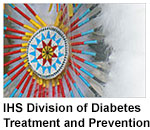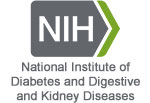- Division of Diabetes Treatment and Prevention (DDTP)
- Clinical Resources
- Diabetes Standards of Care and Resources for Clinicians and Educators
- Preconception, Pregnancy, and Postpartum Diabetes Testing and Care
Diabetes Standards of Care and Resources for Clinicians and Educators
Preconception, Pregnancy, and Postpartum Diabetes Testing and Care
As diabetes incidence has increased in younger American Indian and Alaska Native (AI/AN) people, both pregestational diabetes (PGDM) and gestational diabetes (GDM) have also increased significantly. Hyperglycemia during pregnancy can be associated with morbidity and mortality for both the mother and her infant. Therefore, management of diabetes in pregnancy offers a unique opportunity to affect both patients’ health positively. Currently, women with diabetes and good glycemic control can look forward to pregnancy outcomes that are comparable to that of the general population.
Resource Links
for All Topics
» Online version
» Print version [PDF – 269 KB]
Clinical Practice Recommendations
Recommendations for Preconception, Pregnancy, and Postpartum Diabetes Testing and Care
| Actions | Frequency |
|---|---|
| Ask about reproductive intentions/assess contraception. | At diagnosis, and then every visit |
| Provide preconception counseling and assessment. | 3-4 months prior to conception |
| Screen for undiagnosed type 2 diabetes in pregnant AI/AN women (PGDM). | At first prenatal visit |
| Screen for GDM in all women not known to have diabetes. | At 24-28 weeks gestation |
| Screen for type 2 diabetes in women who had GDM. | At 6-12 weeks postpartum, then 1-3 years lifelong |
Recommendations for Preconception Care
- Inform women that risk is minimized with optimal glycemic control prior to conception, and that glycemic targets are stricter in pregnancy: fasting BG, 65-95 mg/dL; 1 h BG, 100-129 mg/dL; 2 h BG < 120 mg/dL, A1C < 6.0%.
- Women with diabetes who are contemplating pregnancy should be evaluated, and, if indicated, treated for diabetic retinopathy, nephropathy, neuropathy, and cardiovascular disease.
- Evaluate medications prior to conception and switch to only those approved for use during pregnancy.
- Discuss importance of optimal nutrition, folic acid supplementation, and tobacco/alcohol/substance use cessation.
- Consult or refer to multidisciplinary team (e.g., CDE, dietitian) experienced in caring for pregnant women with diabetes.
Pregnancy in women with pregestational diabetes (PGDM) is associated with an increase in risk to both the fetus and the mother. In women with poor glycemic control, the incidence of congenital anomalies and spontaneous abortions increases during the period of fetal organogenesis. A woman may not know she is pregnant during fetal organogenesis, which is not complete until 8 weeks post-conception.
Preconception counseling and planning are essential in women of childbearing age who have type 2 diabetes to optimize their diabetes control before becoming pregnant. It is important to discuss with women who are contemplating pregnancy the need for preparation prior to conception, including excellent glycemic control, use of pregnancy-approved medications, optimal nutrition, and abstinence from tobacco/alcohol/substance use.
Medications commonly used to treat diabetes and its complications may be contraindicated or not recommended in pregnancy, including statins, ACE inhibitors, ARBs, and noninsulin therapies. While there is some evidence supporting the use of glyburide and metformin in gestational diabetes, the ADA and the American College of Obstetrics and Gynecology (ACOG) both have recommended that further study be completed before their use can be supported in pregnancy. Insulin therapy should remain the recommended and preferred treatment for diabetes in pregnancy.
Recommendations for Screening for Diabetes during Pregnancy
- Screen women without known diabetes at their initial prenatal visit to assess for PGDM:
- If the patient is fasting, obtain:
- Fasting plasma glucose, A1C;
- If the patient is not fasting, then obtain:
- A1C, random plasma glucose.
- If the patient is fasting, obtain:
- Screen for GDM at 24 to 28 weeks gestation in patients without PGDM using either:
- Fasting 75 gram, 2-hour OGTT (ADA/IADPSG), or
- Non-fasting 50 gram 1-hour oral glucose tolerance test (OGTT). If abnormal, then follow with a fasting 100 gram, 3-hour OGTT (ACOG).
Patients with a pre-existing diagnosis of type 1 or 2 diabetes do not require diabetes testing. All other patients should be screened at their initial prenatal visit to assess for previously undetected overt diabetes (PGDM) as defined by the criteria listed in the table below.
Diagnosis of Overt Diabetes in Pregnancy (IADPSG 2010)
| Measure of Glycemia | Consensus Threshold | Action |
|---|---|---|
| Fasting Plasma Glucose (FPG) | ≥ 126 mg/dL ≥ 92 mg/dL but < 126 mg/dL < 92 mg/dL |
Diagnose type 2 diabetes. Diagnose GDM. Test for GDM 24-28 weeks. |
| Hemoglobin A1C (A1C) | ≥ 6.5% 5.7%-6.4% |
Diagnose type 2 diabetes. Perform FPG for type 2 or GDM diagnosis. |
| Random plasma glucose | ≥ 200 mg/dL + confirmation | Confirm with FPG or A1C above threshold to diagnose type 2 diabetes. |
Currently, there is a lack of consensus among major guideline-setting organizations as to the optimal screening protocol for GDM. Two testing protocols shown in the table below are acceptable for screening for GDM:
- International Association of Diabetes and Pregnancy Study Groups Recommendations on the Diagnosis and Classification of Hyperglycemia in Pregnancy- ADA Exit Disclaimer: You Are Leaving www.ihs.gov
Diabetes Care 2010;33(3):676–682. doi.org/10.2337/dc09-1848
Screening for and Diagnosis of GDM
| ADA and IADPSG 2010 Recommendations | ACOG 2011 Recommendations | |||||||||||||||
|---|---|---|---|---|---|---|---|---|---|---|---|---|---|---|---|---|
| Perform a fasting 75-g OGTT, with plasma glucose measurement fasting, and at 1 and 2 h, at 24-28 weeks of gestation in women not previously diagnosed with overt diabetes. The OGTT should be performed in the morning after an overnight fast of at least 8 h. The diagnosis of GDM is made when any of the following plasma glucose values are exceeded:
|
Two-step process: Step 1. At 24-28 weeks, perform a screening, non-fasting 50-g glucose challenge. If 1 h value exceeds chosen threshold is ≥ 130 or ≥ 140 mg/dL, go to step 2. Step 2. Perform a diagnostic fasting 100-g OGTT. Either the plasma or serum glucose level established by Carpenter and Coustan or the plasma level designated by the National Diabetes Data Group are appropriate to use. A diabetes diagnosis requires that two or more thresholds be met or exceeded. One abnormal value equals carbohydrate intolerance.
|
Recommendations for Postpartum Diabetes Screening
- Women with previous GDM should be tested postpartum using a fasting 75 gram 2-hour OGTT at 6-12 weeks post-delivery to determine their glycemic status.
- Providers should monitor blood glucose in the postpartum and lactating period as clinically appropriate.
- Women with a normal postpartum OGTT should be re-tested every 1 to 3 years with fasting blood glucose and/or A1C.
Women with GDM are at increased risk of developing type 2 diabetes after delivery. About one-third of all AI/AN women with GDM will develop diabetes within 5 years of delivery. All women with a history of GDM should receive counseling and education regarding lifestyle modifications that will reduce or delay the development of type 2 diabetes. Moreover, the importance of maintaining optimal glucose control prior to and during any subsequent pregnancy should be stressed. Women with a history of diabetes in pregnancy can be offered all standard Food and Drug Administration-approved contraceptive agents. Mothers also should be made aware that children of GDM pregnancies should be monitored for obesity and abnormalities of glucose utilization.
Clinician and Educator Resources
Featured Preconception, Pregnancy, and Postpartum Diabetes Testing and Care Resources
| Organization | Resource |
|---|---|
|
Integrating Case Management Into Your Practice [PDF – 290 KB] Integrating DSMES Into Your Practice [PDF – 548 KB] |
|
American Diabetes Association. 15. Management of Diabetes in Pregnancy: Standards of Care in Diabetes—2025 Exit Disclaimer: You Are Leaving www.ihs.gov Diabetes Care 2025, Vol.48, S306-S320. doi.org/10.2337/dc25-S015 |
Patient Education Resources
Preconception, Pregnancy, and Postpartum Diabetes Testing and Care Patient Education Resources
| Organization | Resource |
|---|---|
|
|
|
Gestational Diabetes Exit Disclaimer: You Are Leaving www.ihs.gov Pregnancy if You Have Diabetes Exit Disclaimer: You Are Leaving www.ihs.gov |
CME Training
| Session Title | Session Material | CME/CE Information |
|---|








